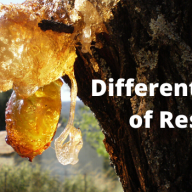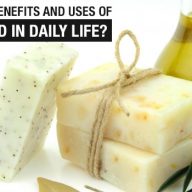Resins for CED Coating

Overview of Resins for CED Coating
Cathodic Electrodeposition (CED) Coating, also known as Electrocoating (E-coat) or Electrophoretic Deposition (EPD), is an advanced coating technology widely used in the automotive, industrial, and appliance industries. This process involves depositing a protective and uniform coating onto a metal surface using an electric current. Resins play a crucial role in determining the final coating’s performance, durability, and quality. As technology advances, the development of hybrid and eco-friendly resins will further enhance the effectiveness of CED coatings in various industries.
Also Read: Construction Chemicals Suppliers India
What Are Resins in CED Coating?
Resins are the backbone of CED coatings, providing durability, protection, and adhesion to metal surfaces. Depending on the requirements—whether it’s corrosion resistance, UV stability, or flexibility—different types of resins (Epoxy, Acrylic, Polyurethane, and Hybrid) are used in CED coatings. Resins are the key film-forming components in Cathodic Electrodeposition (CED) Coatings. They determine the coating’s durability, adhesion, corrosion resistance, and overall performance. In a CED coating system, resins form the base of the paint and help bind the pigments, additives, and other ingredients to the metal surface during the electrodeposition process.
Also Read: Epoxy Resin Suppliers India
Types of Resins Used in CED Coating
Resins are the foundation of a strong and durable CED coating. Whether it’s epoxy for rust prevention, acrylic for UV resistance, polyurethane for impact protection, or hybrids for an all-around solution, choosing the right type of resin is key to achieving long-lasting, high-performance coatings.
- Epoxy Resins – The Corrosion Fighters: Epoxy resins are widely used in automotive primers, industrial equipment, and marine applications because they offer strong protection against rust and chemicals. Provides superior protection against rust and oxidation. Bonds effectively to metal surfaces, ensuring a durable coating.
- Acrylic Resins – The UV Protectors: Acrylic resins are widely used in topcoats due to their excellent UV stability and weather resistance. If epoxy is good for corrosion resistance, acrylic resins are the best for sunlight and weather protection. It is used in automotive topcoats, household appliances, and outdoor structures.
- Polyurethane Resins – The Flexible Protectors: Polyurethane resins are known for their flexibility, impact resistance, and toughness. It is great for industrial machinery, aerospace, and automotive coatings where the coating must withstand physical stress, chemicals, and temperature changes.
- Hybrid Resins – The Best of Both Worlds: Hybrid resins combine the benefits of two or more resin types to achieve enhanced performance. Combines the corrosion resistance of epoxy with the UV stability of acrylic. Used in automotive coatings, appliances, and construction materials.
- Carboxy-Functional Epoxy Ether Resin, which is highly versatile and can be used in various formulations:
- Water-based, elevated-temperature cured core plate varnish for steel plates – When combined with methylated melamine formaldehyde resin, it enhances insulation and heat resistance.
- Water-based, ambient-temperature curing anti-corrosive coatings for metal substrates – Utilizes metal carboxylates such as zirconium, calcium, manganese, and cobalt to improve corrosion resistance.
- Water-based, ambient-temperature curing alkali-resistant coatings for concrete substrates – Formulated with metal carboxylates (zirconium, calcium, manganese, cobalt) to provide excellent durability and protection against harsh environmental conditions.
Different types of resins are used in CED coatings, depending on the application requirements and environmental conditions. Selecting the right resin is crucial to achieving long-lasting, high-performance coatings across automotive, industrial, and consumer applications.
Also Read: Top Chemical Distributors In India
How Does CED Coating Work?
CED Coating is a widely used anti-corrosion coating method that ensures a uniform, durable, and high-quality protective layer on metal surfaces. It is commonly applied in automobiles, industrial machinery, home appliances, and aerospace components. CED Coating is a high-tech painting method used to protect metal surfaces from rust, corrosion, and wear. It ensures a smooth, even, and durable coating on complex shapes, making it widely used in automobile parts, industrial equipment, and appliances.
Step-by-Step Process of CED Coating
- Surface Preparation (Cleaning & Pretreatment): Before applying the CED coating, the metal surface must be thoroughly cleaned to remove rust, dirt, oil, grease, and other contaminants. Any impurities on the surface can interfere with the coating adhesion and reduce effectiveness. A thin phosphate conversion coating is applied to the surface. This helps improve corrosion resistance and adhesion of the CED coating. The metal part is rinsed again with deionized water and dried before moving to the next step.
- Electrodeposition (CED Coating Application): Electrophoretic deposition, where the metal part is dipped into a CED coating bath containing water-based paint particles. The metal part is submerged in a tank filled with a CED paint solution (a mixture of resins, pigments, and deionized water).
- Rinsing (Removing Excess Paint): Once the metal part is coated, it is rinsed to remove any excess or loosely bound paint. This ensures a smooth and uniform finish. The coated part is passed through multiple rinse tanks containing deionized (DI) water. Ensures no paint wastage, provides a smooth finish, and maintains uniformity in the coating.
- Curing & Baking (Final Hardening of Coating): After rinsing, the coated part is sent to a curing oven, where it is heated at 180°C – 200°C for about 20-30 minutes. The heat causes the resins and pigments to cross-link, forming a strong chemical bond with the metal surface. Heat curing transforms the CED coating from a soft layer into a strong protective shield that can withstand harsh environments.
CED Coating is like a protective armor for metal parts. CED Coating is a highly advanced and reliable method for protecting metal parts from corrosion and damage.
Also Read: Titanium Dioxide Manufacturers In Delhi
Advantages of CED Coating
CED Coating is one of the most advanced coating technologies used to protect metal surfaces from corrosion, rust, and wear. It is widely used in the automotive, industrial, and appliance industries due to its superior properties compared to traditional painting methods.
- Superior Corrosion Resistance: One of the biggest advantages of CED coating is its exceptional protection against rust and corrosion. The coating forms a uniform protective layer over the metal. This makes CED coating ideal for automobile parts, electrical appliances, and industrial machinery, ensuring a longer lifespan.
- Uniform Coating with Perfect Coverage: Unlike spray painting, which can leave uneven areas, CED coating ensures complete and uniform coverage. It eliminates the need for extra touch-ups, reduces material wastage, and ensures all areas of the product are well-protected.
- Highly Durable and Scratch-Resistant: CED coatings are tough and long-lasting, making them resistant to scratches, chipping, and abrasions. The coating is baked at high temperatures (180–200°C), which makes it hard and resistant.
- Eco-Friendly and Low Pollution: Unlike solvent-based paints, which release harmful chemicals (VOCs) into the air, CED coating is water-based and environmentally friendly. CED coating is safe for workers and the environment, complying with strict environmental regulations.
- Cost-Effective and Efficient: CED coating reduces costs in the long run by minimizing paint wastage, rework, and maintenance. The industries save money on materials, labor, and repainting costs.
CED Coating offers superior protection, durability, and environmental benefits, making it the best choice for industries that need long-lasting, high-performance coatings.
Market Size Overview of CED Coating
The CED coating market has witnessed significant growth due to rising demand for high-performance coatings, increasing automotive production, and strict environmental regulations promoting eco-friendly coatings.
The global CED coating market was valued at USD 3.5 billion in 2022 and is projected to grow at a Compound Annual Growth Rate (CAGR) of 5.2% from 2023 to 2030. By 2030, the market is expected to reach USD 5.4 billion due to increasing applications in automotive, industrial machinery, and consumer goods.
The CED coating market is on a steady growth trajectory, driven by automotive, industrial, and consumer goods applications. With a focus on eco-friendly solutions, improved durability, and increased adoption in various industries, the market is expected to expand significantly in the coming years.
CED Coating Suppliers and Distributors
CED coatings require specialized materials, resins, and equipment, suppliers and distributors play a crucial role in ensuring the availability of high-quality raw materials and solutions for manufacturers. CED coating suppliers and distributors bridge the gap between manufacturers and end-users, ensuring that high-quality materials are available for diverse applications. The growing demand for corrosion-resistant eco-friendly coatings has led to the global expansion of the CED coating supply chain, supporting industries such as automotive, industrial equipment, and consumer goods. Bansal Trading Company distinguishes itself as a trusted supplier and distributor of CED coating materials, delivering high-performance solutions to industries that require reliable, corrosion-resistant coatings. By ensuring quality, consistency, and industry compliance, the company remains a preferred partner for businesses seeking advanced CED coating raw materials.
BTC_WEB_ADMIN






